Author: Marshall Schott
Brewed in the Thuringia, Saxony, and Franconia regions of Germany with a documented history stretching all the way back to the 16th century, Schwarzbier’s likeness to squid ink is bound to confuse some lager lovers who expect such “black beer” to taste of coffee, chocolate, or ash. Fortunately, this is far from the case, as Schwarzbier is essentially a darker version of a Pilsner with a similarly light bodied crispness that makes it enormously crushable.
My introduction to Schwarzbier came quite recently– on a family vacation 6 years ago, I picked up a six-pack of Uinta Brewing’s Baba Black Lager and immediately developed an infatuation with the style. Over the following the months, I tried every commercial example I could get my hands on including the popular, not to mention delicious, Köstritzer Schwarzbier as well as numerous versions from American craft breweries. When I finally decided to brew my own Schwarzbier, I knew I’d have to figure out a way to extract the smooth roast character and dark color from some type of roasted grain while avoiding any acrid or ashy character typically associated with Stout and Porter. In reviewing various homebrew recipes, I discovered the common usage of a malt produced by Weyermann called Carafa Special II, a de-husked malt purported to impart the smooth roast character expected in German dark lagers.
During a recent trip to New Zealand, I struck up a conversation with Gabi Michael from Gladfield Malt and mentioned my love of Schwarzbier. She explained they don’t currently offer a de-husked roasted malt, but that she’d be interested in an xBmt comparing Carafa Special II to chocolate malt, offering to provide me with their Light Chocolate malt since it is roasted to a similar level. Having used chocolate malt in Schwarzbier in the past, this variable definitely interested me, so I agreed to put it to the test!
| PURPOSE |
To evaluate the differences between Carafa Special II and Chocolate malt when used in beers of otherwise similar recipes.
| METHODS |
The recipe I designed for this xBmt was inspired by one I’d made many times, May The Schwarzbier With You, with a few changes to accommodate the variable.
Chaff In The Dark
Recipe Details
| Batch Size | Boil Time | IBU | SRM | Est. OG | Est. FG | ABV |
|---|---|---|---|---|---|---|
| 5.5 gal | 60 min | 24.8 IBUs | 26.1 SRM | 1.055 | 1.011 | 5.7 % |
| Actuals | 1.055 | 1.011 | 5.8 % | |||
Fermentables
| Name | Amount | % |
|---|---|---|
| Pilsner (2 Row) Ger | 6.75 lbs | 57.45 |
| Munich 10L (Weyermann) | 3.75 lbs | 31.91 |
| Carafa Special II OR Gladfield Light Chocolate Malt | 12 oz | 6.38 |
| Caramel/Crystal Malt - 60L | 8 oz | 4.26 |
Hops
| Name | Amount | Time | Use | Form | Alpha % |
|---|---|---|---|---|---|
| Magnum | 14 g | 60 min | Boil | Pellet | 11.2 |
| Hallertauer Mittelfrueh | 30 g | 10 min | Boil | Pellet | 2.4 |
Yeast
| Name | Lab | Attenuation | Temperature |
|---|---|---|---|
| Global (L13) | Imperial | 75% | 46°F - 56°F |
Notes
| Water Profile: Brown Bitter in Bru’n Water Spreadsheet |
Download
| Download this recipe's BeerXML file |
I built up a single large starter of Imperial Organic L13 Global yeast with enough time to ensure solid viability.
Since this xBmt would require dual mashes, I collected 2 sets of water the night before brewing and adjusted them to the same profile. I then did an observational comparison of the whole Carafa and Chocolate malts to see if there were any differences.
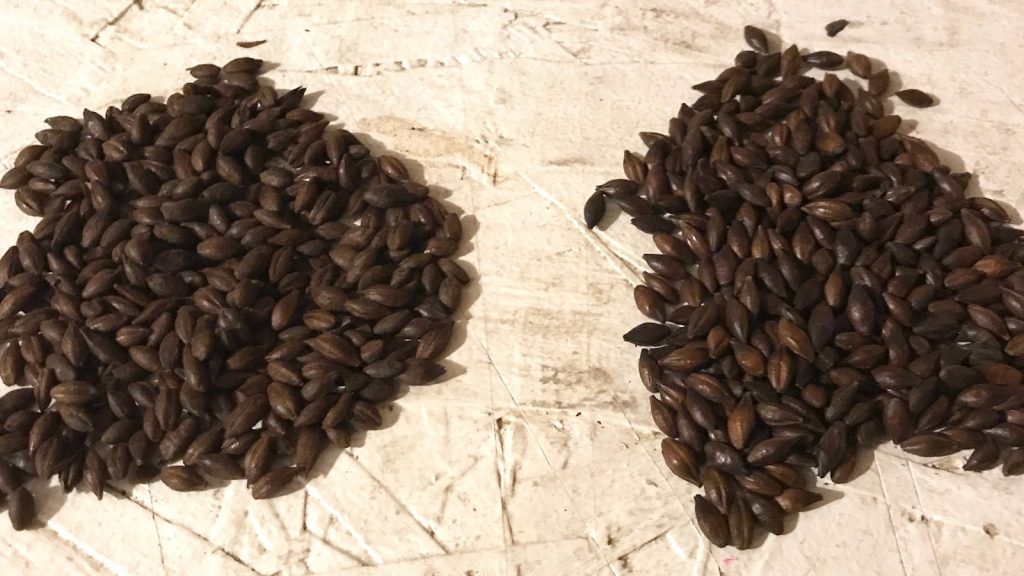
With the grains measured out, I proceeded to mill each set into its own bucket.
My brew day began early the following morning, hitting the flame under one kettle of brewing liquor about 20 minutes before the other.
Once strike temperature was reached, I transferred the water to my MLT then gently incorporated the grains.
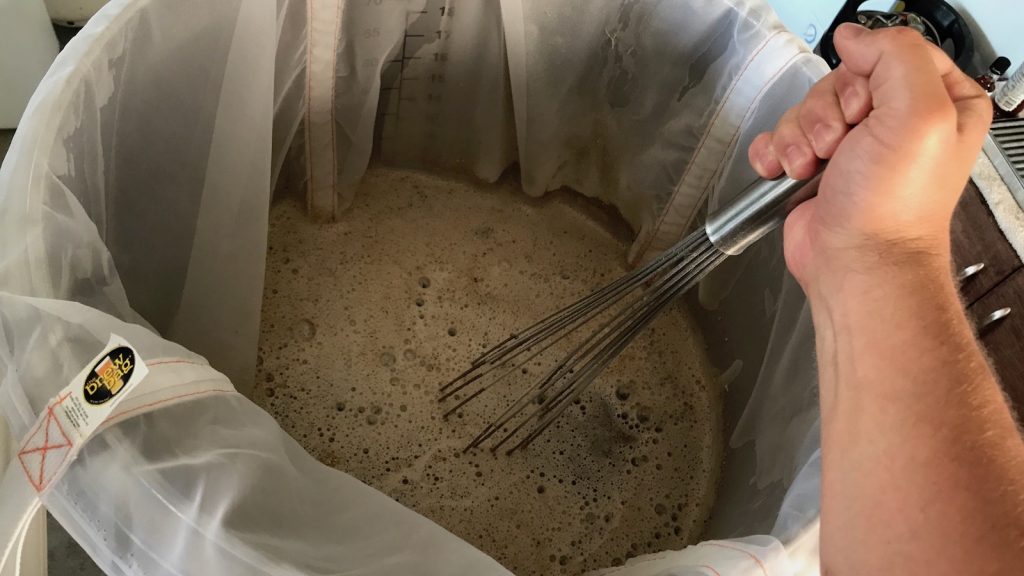
Both batches hit the mash temperature I was targeting.
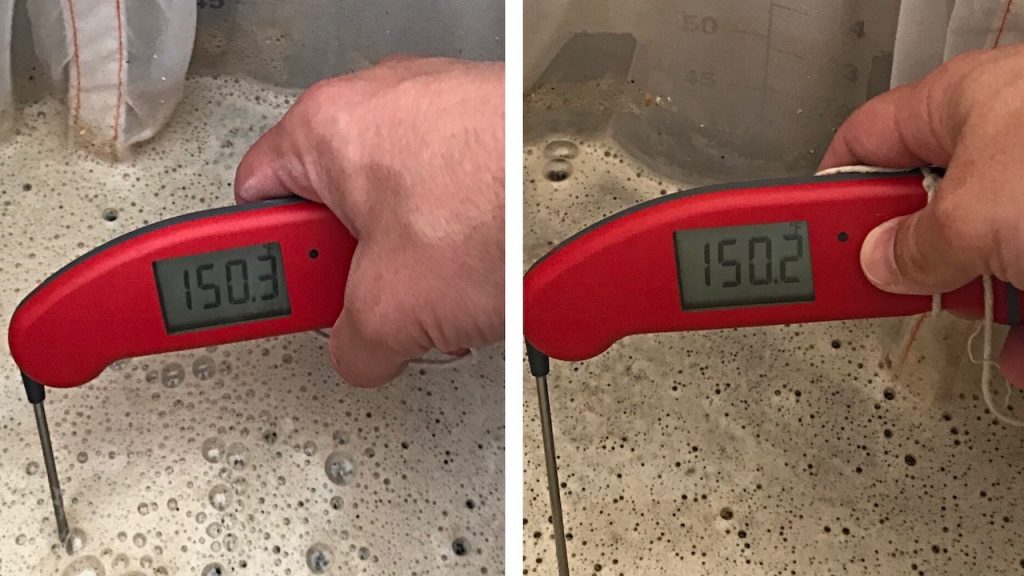
A pH measurement 10 minutes into either mash revealed only the slightest difference. (???)
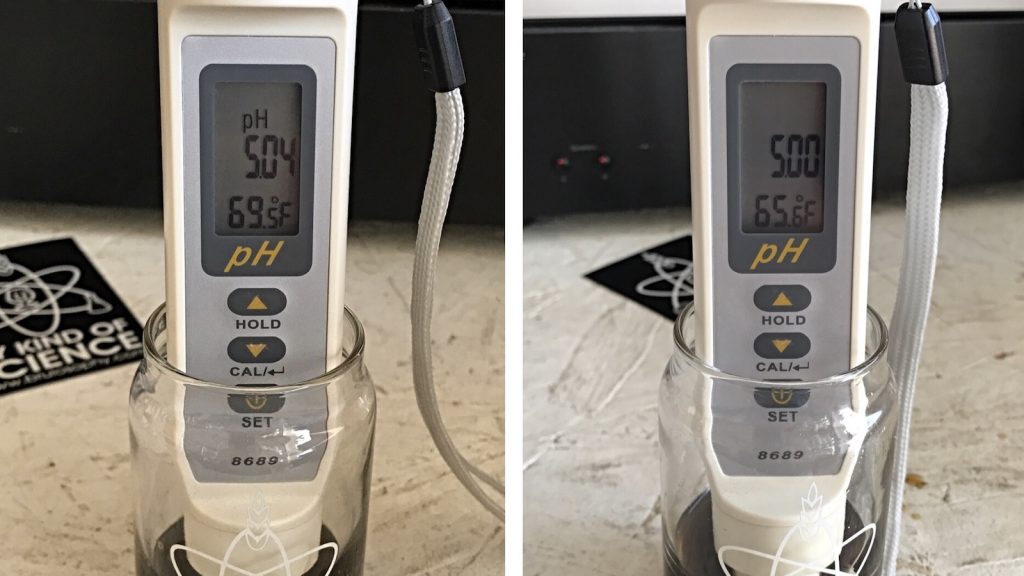
The mashes were left to rest for 60 minutes, each being stirred once at the halfway point, then with the help of some curious assistants, the sweet wort was collected.
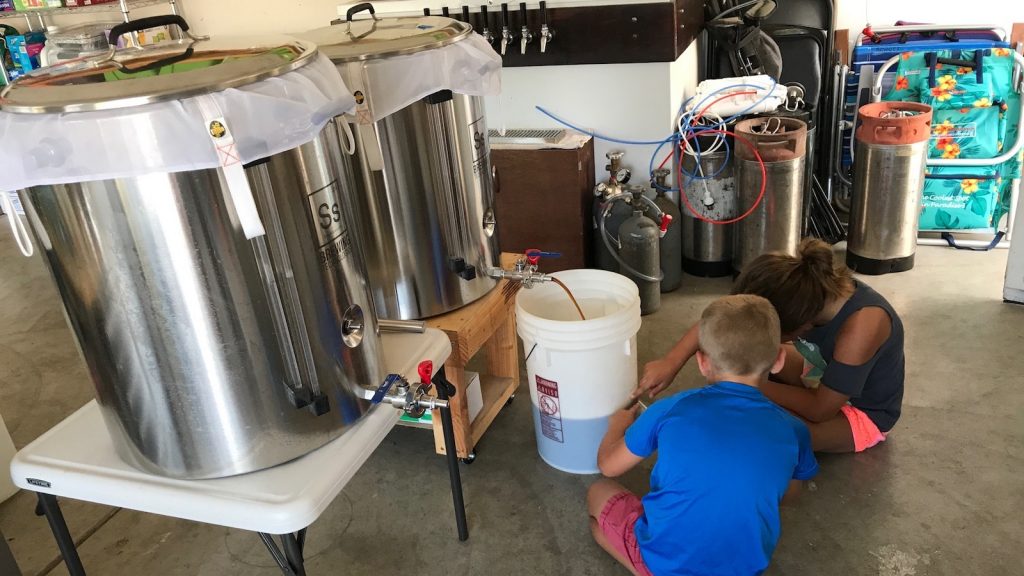
As the worts were being heated, I measured out the hop additions for each batch.
Both batches were boiled for precisely 60 minutes, during which hop additions were made at the same times.
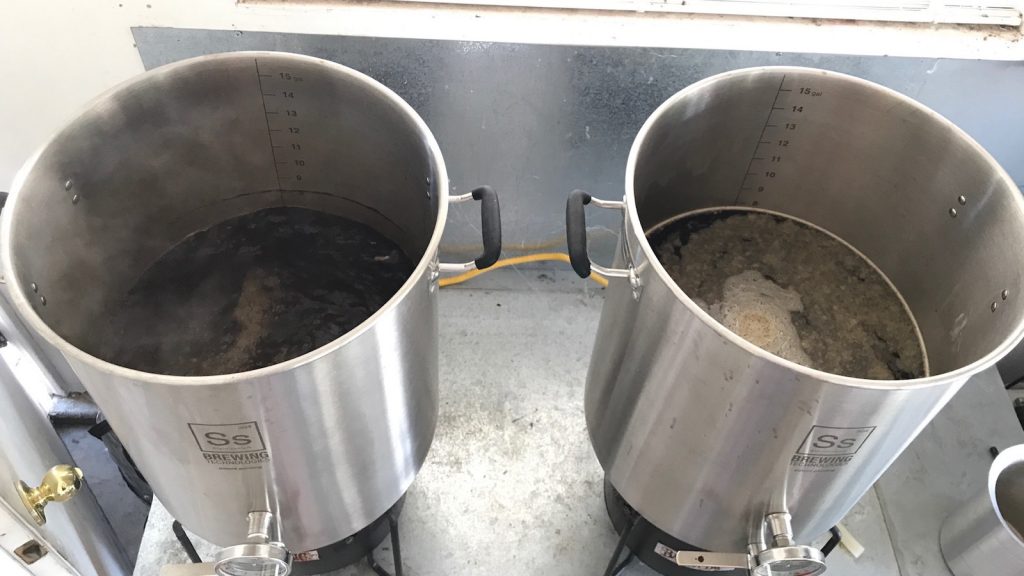
At the completion of each boil, I quickly chilled the worts to 80°F/27°C, slightly warmer than my summer groundwater temperature, then took refractometer readings showing they’d achieved a similar OG.
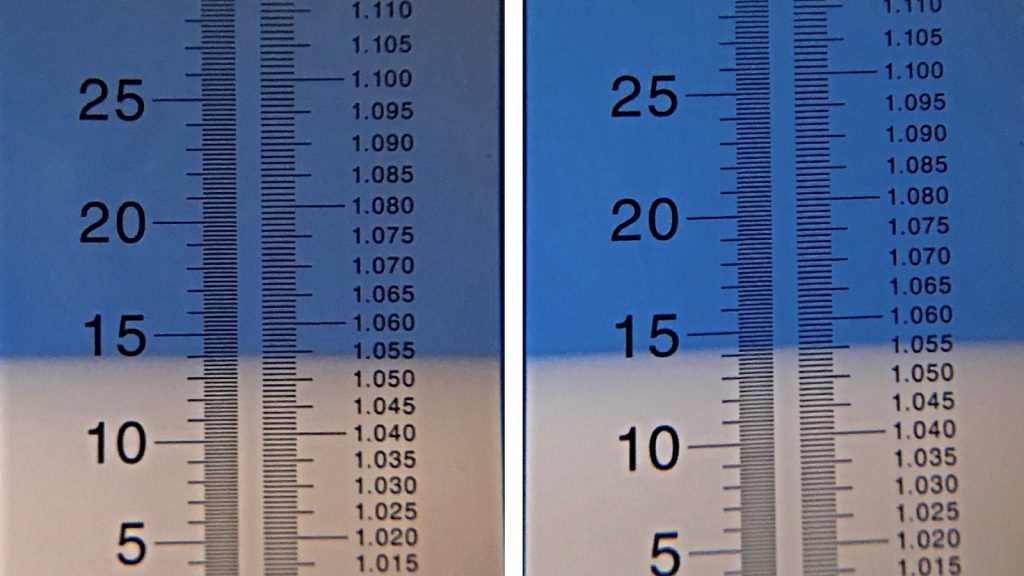
Separate sanitized fermentors then received equal amounts of either wort.
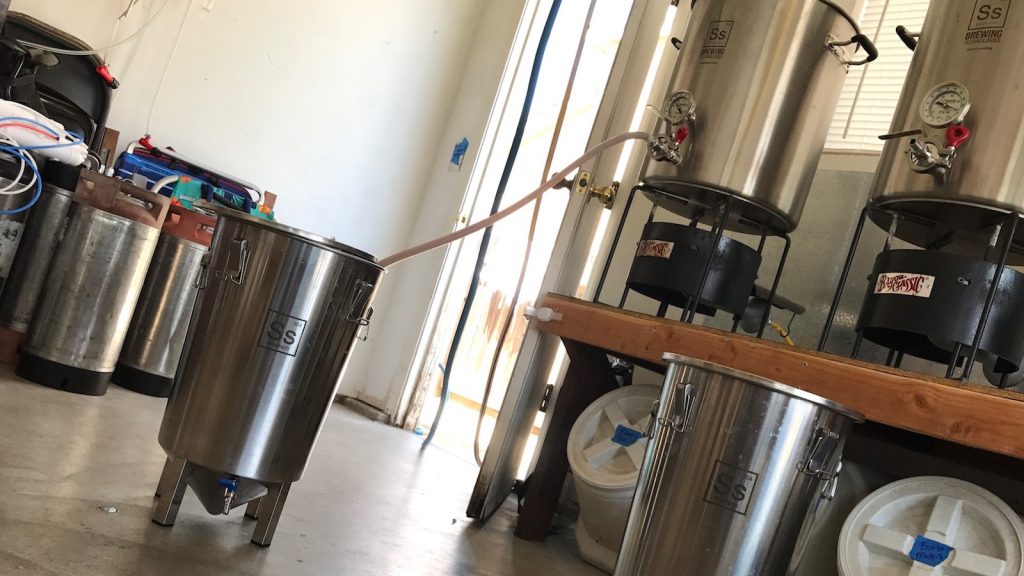
The fermentors were placed next to each other in my cool chamber to finish chilling. It took about 5 hours for both to stabilize at my desired fermentation temperature of 50°F/10°C, at which point divided the yeast starter equally between 2 smaller flasks and pitched. The beers were left to ferment for 9 days before I began ramping the temperature up to 68°F/20°C, where I let it sit for another 5 days before taking hydrometer measurements showing both had reached FG.
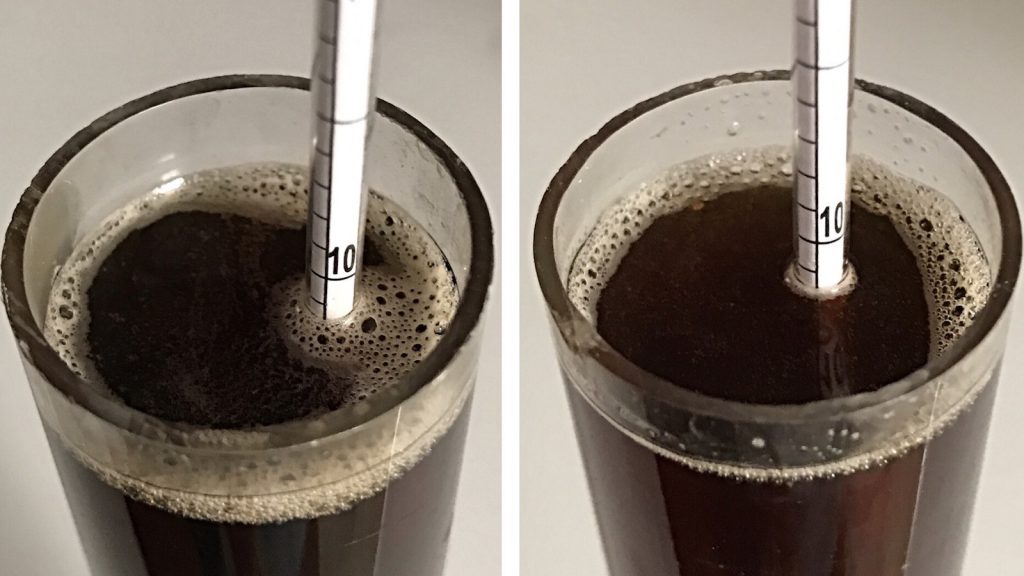
With no detectable off-flavors present and signs of fermentation absent, I cold crashed to 32°F/0°C, fined with gelatin, then kegged the beers 21 days after they were brewed.
The filled kegs were placed in my keezer and burst carbonated at 50 psi for 14 hours before I reduced the gas to serving pressure and allowed the beers to lager for an additional 2 weeks before collecting data. I observed a slight but noticeable difference in appearance once the beers had cleared, though both looked quite nice.
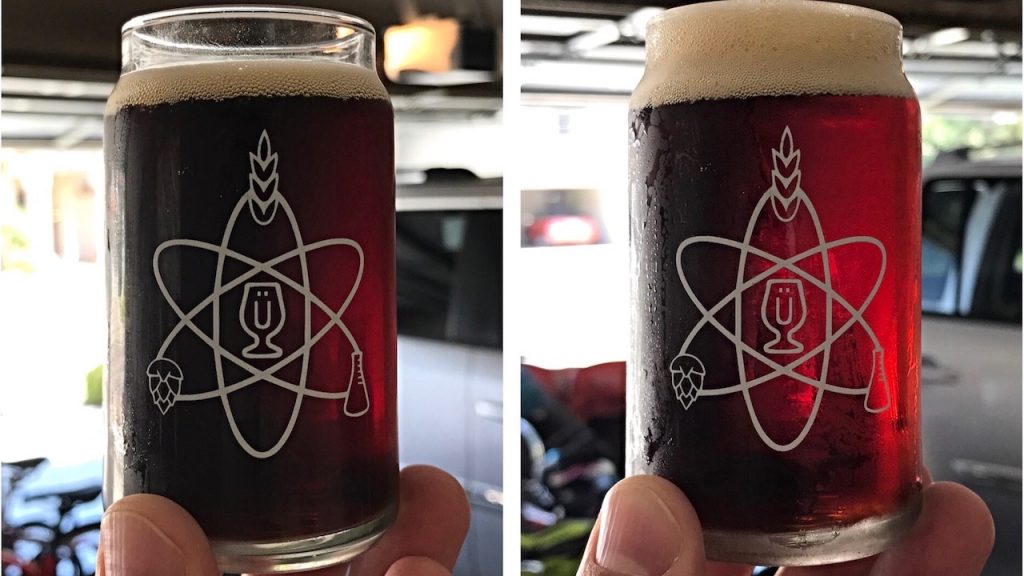
| RESULTS |
A total of 24 people of varying levels of experience participated in this xBmt. Each participant was served 1 sample of the Carafa Special II beer and 2 samples of the chocolate malt beer then asked to identify the sample that was unique. While 13 tasters (p<0.05) would have had to correctly identify the unique sample in order to reach statistical significance, only 10 (p=0.25) picked the odd-beer-out, indicating participants in this xBmt were not able to reliably distinguish a Schwarzbier made with 12 oz/340 g of Carafa Special II malt from one made with the same amount of Gladfield Malt Chocolate Light malt.
My Impressions: I love Schwarzbier! Both the Carafa Special II and the chocolate malt versions were delicious, possessing the crisp drinkability I expect from a lager with a touch of subtle roast and chocolate. I went into this xBmt convinced the beers were going to be quite different and thus approached my first triangle test attempts somewhat arrogantly, presuming I’d be able to pick the unique sample immediately. Of course, that’s not how things turned out, the beers ended up tasting very similar. Over 6 semi-blind and very biased triangle test attempts served to me by a friend, I was correct only 3 times.
| DISCUSSION |
The first time I ever used Carafa Special malt was by complete accident. Many years ago, I brought a recipe sheet for a Stout I’d designed into my local homebrew shop and let the dude who worked there gather and mill the grains for me. As he was ringing me up, he realized he’d mistakenly used Carafa Special III instead of the Raosted Barley that was printed on the sheet. Unfamiliar with Carafa, and pressed for time, I paid for the bag of grains and figured I’d roll with it. It wasn’t until making the substitution in BeerSmith after mashing in the next day that I read up on what exactly Carafa Special malts were intended for. Slightly annoyed with the “fact” my Stout wasn’t going to have the roast character I desired, I pressed on and 3 weeks later began drinking the beer only to realize it possessed all the characteristics of… Stout.
Despite this experience, I remained convinced the dehusked nature of Carafa Special malts did serve a purpose and used them in the same way many do, to darken lagers without imparting the more pungent roast character typically associated with Porter and Stout. For this reason, I settled on a Schwarzbier for this xBmt and admittedly expected to see significant results. Surprisingly, not only were participants unable to reliably distinguish between a beer made with Carafa Special II and one made with the same amount of chocolate malt, but I couldn’t either, they tasted exactly the same to me.
In considering reasons for these particular findings, the fact each beer was made with only 12 oz/340 g of either malt came to mind. It is entirely possible this relatively small amount made it such that any impact of the malts were covered up by other beer characteristics, though given the yeast and hops used, this is difficult for me to accept. I also wondered if the lack of a noticeable difference between the beers might have something to do with the malt source, perhaps Gladfield Malt’s Chocolate Light malt somehow has a smoother character than other commonly used chocolate malts. Still, the fact Gladfield does not dehusk their malt leaves me skeptical this is the answer. Could it be that Carafa Special II really isn’t all that different than chocolate malt? While I’m not ready to adopt this perspective just yet, I certainly won’t hesitate to use a little chocolate malt in a Schwarzbier or Dunkel if I’m all out of Carafa Special II.
If you have any thoughts about this xBmt, please do not hesitate to share in the comments section below!
Brülosophy Merch Available Now!
Follow Brülosophy on:
FACEBOOK | TWITTER | INSTAGRAM
If you enjoy this stuff and feel compelled to support Brulosophy.com, please check out the Support page for details on how you can very easily do so. Thanks!


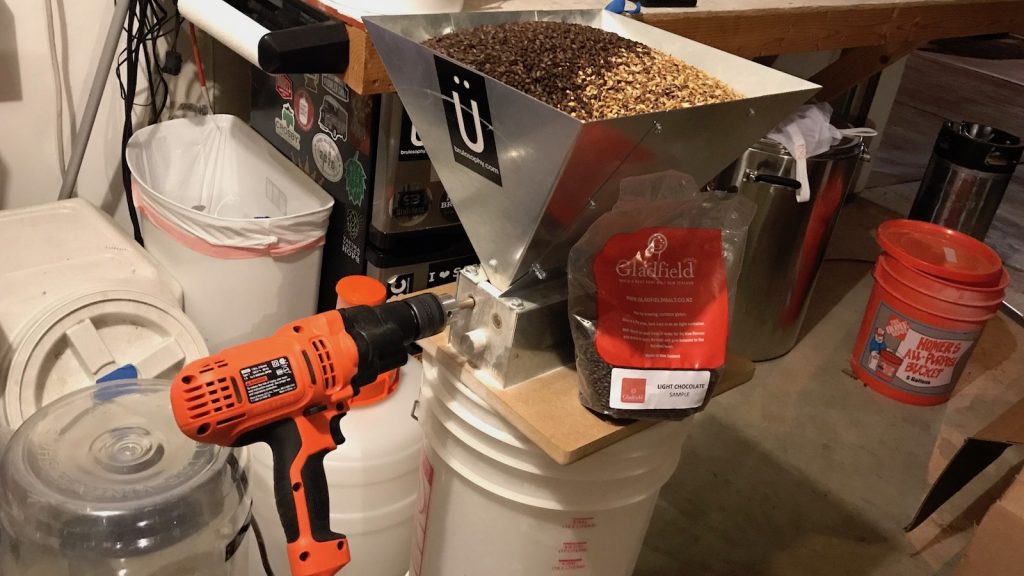
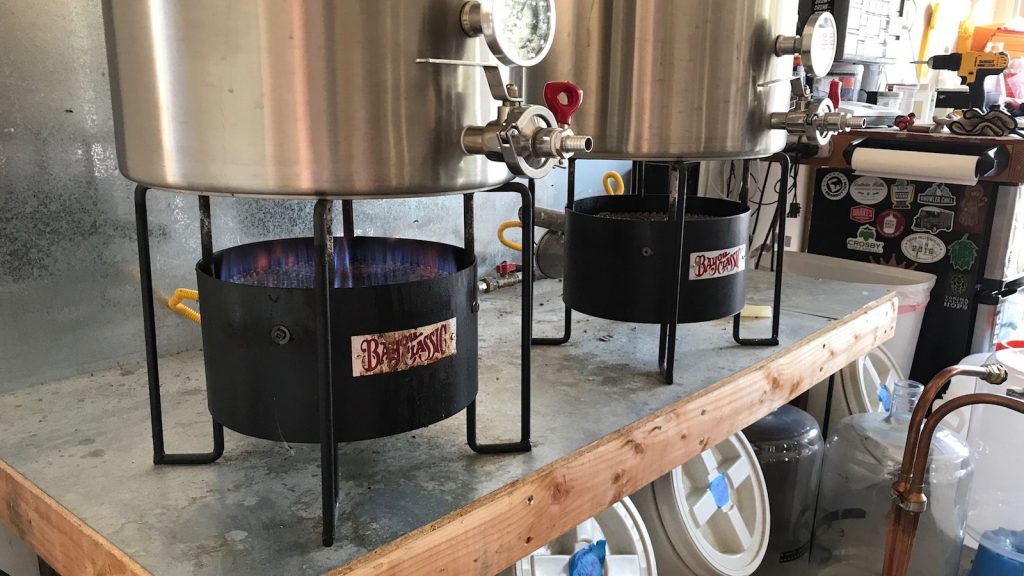
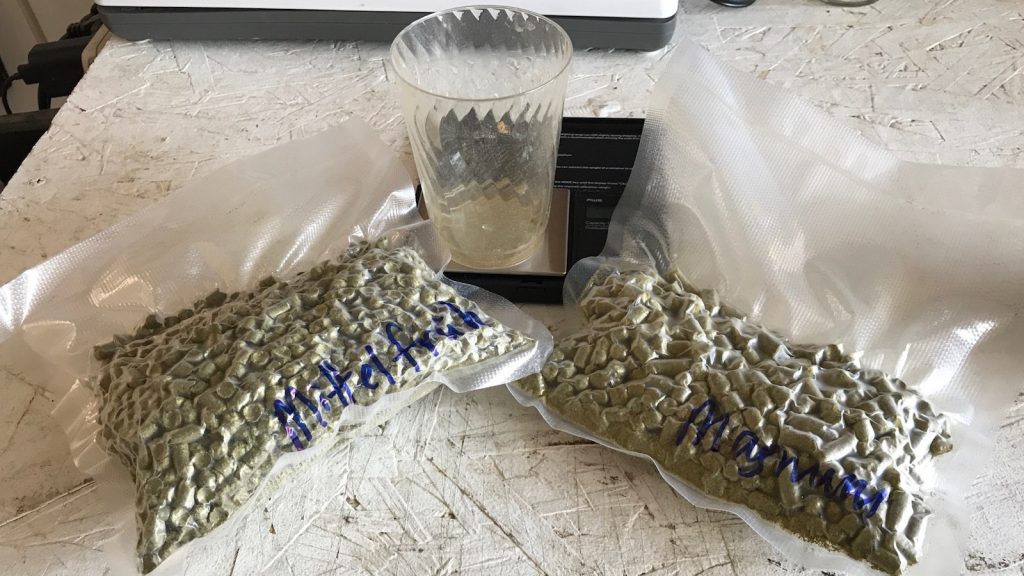
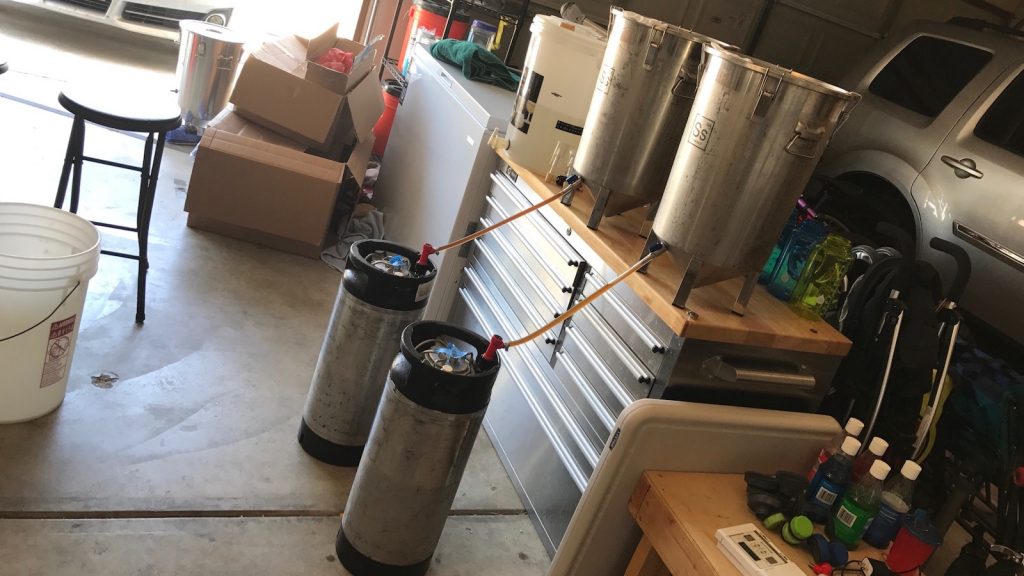










18 thoughts on “exBEERiment | Roasted Grains: Carafa Special II vs. Chocolate Malt In A Schwarzbier”
Any thoughts on that on that pH measurement? Were you targeting 5.0? I’ve one in lower than expected 5.05 and 5.15 on a couple batches recently and happy to see you were happy with the beers.
According to some Weyermann people in the know, Köstritzer Schwarzbier is a very normal pilsner with a metric shit ton of Sinamar, a colorant derived from Carafa Spezial. A previous exBeeriment focused on the impact of appearance using Sinamar (https://brulosophy.com/2017/04/27/the-impact-appearance-has-on-perception-of-other-beer-qualities-exbeeriment-results/) and hinted to the fact if blindfolded, tasters would think that Köstritzer is just a pils. Ein ganz normales Pils.
The Köstritzer brewery is about an hour away from me and their “ganz normales Pils” always gives me a banging head the next day. Their Schwarzbier is not bad, but I find it a bit thin. They have recently started doing a Pale Ale which is much better. 🍻
Sinamar for sure. Using 0.5 lb Carafa II gives beer an incredibly roasty (almost Porter) flavor (yes I’ve done it!), so this recipe is definitely not a German-style Schwarzbier, which have minimal roast notes.
Great write up. Kinda’ knew what the outcome was going to be, though. I’ve brewed this style (Köstritzer is my favorite, too) a couple of times using either Carafa II or Chocolate, depending on what I had the most of at the time. Oddly enough, I brewed a jet-black version on 31JULY. I was aiming for 30 plus SRM and, according to Brewsmith, ended up with 31.1. I combined Carafa III this time, Chocolate, and roasted barley. I went 90 minutes on the total mash, adding the roasted grain for the final 30 minutes. Downside, I had a horribly stuck sparge. Also, I’m using Saflager 34/70. Long story. I’m interested to see how this one tastes with the 34/70 instead of the WLP 833 I assumed I had on hand.
Thanks for this style choice.
I was really expecting to see a noticeable difference in this exBeeriment! This is definitely good to know when brewing for this style. Marshall, I just brewed your “May the Schwarzbier With You” recipe and substituted midnight wheat with the Carafa II, and used English pale chocolate instead of the regular chocolate malt (I love that pale chocolate). I used 34/70 as well, so hopefully that will turn out ok. Looks and smells great so far from a sample! Anyway, just wanted to say thanks for the data and your recipe. Cheers!
I’ve subbed Midnight Wheat, works well. I’d think Pale Chocolate will contribute more of a nutty character.
My house recipe uses equal amounts of special ii and chocolate wheat. It’s fantastic.
Hey Marshall,
Thanks for the writeup – good stuff as usual. Just curious why you chose to go with a more traditional lager fermentation on this one vs. your more recent method you’ve been using with the Saflager 34/70 @ 65F? Can you share your thoughts on that?
Any thoughts on running an experiment comparing one batch in which the black/roasted malts are cold steeped over-night and added to the boil rather than mashed along with the base malts? I’ve heard that this reduced the acrid/bitterness in the beer but have never run a side-by-side test.
It’s on the list!
Thanks Marshall for doing this xBmt, and for taking my idea on! We are pleased with the results and confirm what we have thought. We have formulate our dark malts recipes for minimum stringency flavours by selecting the right barley and for looking after the husk while we roast our chocolate malts. Glad to know that attention to detail can help eliminate the step of dehusking the barley which in the long run just adds to the cost of the malts and also can damage the grains. Love your work Marshall, keep it up. Cheers Gabi
I really enjoy the grain comparisons xbmts. One of the most mythical theme that we discuss in our fb group here in Mexico is the use of 2 row vs 6 row in a lager. So, will wonderful if you can consider this theme in the future. Thank you,
we love your work
Where are you at in Mexico German? I’m in B.C.S..
Frankly, I’m not that surprised at the results. The variable malt was less than 7% of the total mashbill. Since the two malts are really very similar, you’ll probably need a much larger percentage to be able to make a more general statement about subbing one for the other.
Can I just use 34/70 at 66* just like the munich helles (also on your site)? I brewed the munich helles this way and wow, it turned out excellently.
I was using Carafa II in MY Schwarzbier grain bill, as a proud New Zealander i’ve made it my mission to stick to Gladfield for as many of my beers as I can so that i’m doing my (albeit small) part to support local. I also love Gladfield’s story and quality product. Anyway, I was wondering if there was an alternative to the Carafa (all other grains in my recipe already come from Gladfied), I checked their app which converts the amount and type of another brands’ malt to theirs – The result being light chocolate of course. Very skeptical anyone had done any tests or that I’d find any opinions on the difference between these two malts and given the husk difference between them, I figured it might not be a match. Oh my surprise when google turned up a Brulosophy experiment comparing the exact two malts I wanted to compare AND in the same style of beer.
Thanks again Marshall! Brulosophy is a gold mine of great information – I’m going Light Chocolate in my next Schwarzbier brew.
Cheers!